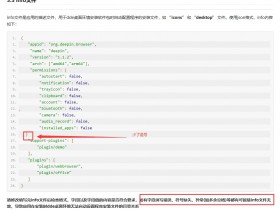- A+
系列导航
使用Hot Chocolate和.NET 6构建GraphQL应用文章索引
需求
在本文中,我们将会准备好用于实现GraphQL接口所依赖的底层数据,为下一篇文章具体实现GraphQL接口做准备。
实现
实体定义
在上一篇文章使用Hot Chocolate和.NET 6构建GraphQL应用(1) —— GraphQL及示例项目介绍我们给出的实体关系图稍微进行一些简化,去掉了关于评论回复的实体定义。我们先来实现关于Post/Comment/Tag的实体以及对应的Configuration:
Post.cs
namespace PostGraphi.Domain.Post.Entities; public class Post : AuditableEntity, IEntity<Guid>, IHasDomainEvent { public Guid Id { get; set; } public string? Title { get; set; } public string? Author { get; set; } public string? Abstraction { get; set; } public string? Content { get; set; } public string? Link { get; set; } public DateTime PublishedAt { get; set; } public ICollection<Tag> Tags { get; set; } = new HashSet<Tag>(); public ICollection<Comment> Comments { get; set; } = new List<Comment>(); public List<DomainEvent> DomainEvents { get; set; } = new(); } Comment.cs
namespace PostGraphi.Domain.Post.Entities; public class Comment : IEntity<Guid> { public Guid Id { get; set; } public string? Content { get; set; } public string? Name { get; set; } public DateTime CreatedAt { get; set; } public Guid PostId { get; set; } public Post Post { get; set; } } Tag.cs
namespace PostGraphi.Domain.Post.Entities; public class Tag : IEntity<Guid> { public Guid Id { get; set; } public string? Name { get; set; } public ICollection<Post> Posts { get; set; } = new HashSet<Post>(); } PostConfiguration.cs
namespace PostGraphi.Infrastructure.Persistence.Configurations; public class PostConfiguration : IEntityTypeConfiguration<Post> { public void Configure(EntityTypeBuilder<Post> builder) { builder.Ignore(e => e.DomainEvents); builder.Property(t => t.Title).HasMaxLength(200).IsRequired(); builder.HasMany(t => t.Tags).WithMany(a => a.Posts); builder.HasMany(t => t.Comments).WithOne(c => c.Post).HasForeignKey(c => c.PostId); } } CommentConfiguration.cs
namespace PostGraphi.Infrastructure.Persistence.Configurations; public class CommentConfiguration : IEntityTypeConfiguration<Comment> { public void Configure(EntityTypeBuilder<Comment> builder) { builder.Property(t => t.Content).HasMaxLength(255).IsRequired(); builder.HasOne(t => t.Post).WithMany(a => a.Comments).HasForeignKey(t=>t.PostId); } } TagConfiguration.cs
namespace PostGraphi.Infrastructure.Persistence.Configurations; public class TagConfiguration : IEntityTypeConfiguration<Tag> { public void Configure(EntityTypeBuilder<Tag> builder) { builder.Property(t => t.Name).HasMaxLength(30).IsRequired(); builder.HasMany(t => t.Posts).WithMany(a => a.Tags); } } 并在DbContext类中添加:
PostGraphiDbContext.cs
public DbSet<Post> Posts => Set<Post>(); public DbSet<Tag> Tags => Set<Tag>(); public DbSet<Comment> Comments => Set<Comment>(); 数据库注入
我们需要修改模版里默认的数据库注入的方式,为了演示重点内容起见,我将数据库修改为SQLite:
InfrastructureDependencyInjections.cs
// 省略其他... // 为了注入数据库实例时还能在构造函数中使用依赖注入 services.AddEntityFrameworkSqlite(); // 使用AddPooledDbContextFactory进行数据库的注入,因为在GraphQL的并发请求下,直接AddDbContext在执行时会报错。 services.AddPooledDbContextFactory<PostGraphiDbContext>((serviceProvider, options) => { options.UseSqlite("Data Source=PostGraphi.db"); // 允许在DbContext的构造函数中使用依赖注入容器 options.UseInternalServiceProvider(serviceProvider); }); 准备种子数据
修改PostGraphiDbContextSeed内容,准备一些种子数据:
PostGraphiDbContextSeed.cs
public static async Task SeedSampleDataAsync(PostGraphiDbContext context) { if (!context.Posts.Any()) { var posts = new List<Post> { new() { Title = "1 - introduction to graphql", Abstraction = "this is an introduction post for graphql", Content = "some random content for post 1", Author = "code4nothing", PublishedAt = DateTime.Now.AddDays(-2), Link = "http://link-to-post-1.html", Comments = new List<Comment> { new() { CreatedAt = DateTime.Now.AddHours(-3), Content = "comment 01 for post 1", Name = "kindUser01" }, new() { CreatedAt = DateTime.Now.AddHours(-2), Content = "comment 02 for post 1", Name = "kindUser01" }, new() { CreatedAt = DateTime.Now, Content = "comment 03 for post 1", Name = "kindUser02" } }, Tags = new List<Tag> { new() { Name = "graphql" }, new() { Name = ".net6" } } }, new() { Title = "2 - integrate graphql with hot chocolate to .net6", Abstraction = "this is an introduction post for how to integrate graphql to .net6", Content = "some random content for post 2", Author = "code4nothing", PublishedAt = DateTime.Now.AddDays(-1), Link = "http://link-to-post-2.html", Comments = new List<Comment> { new() { CreatedAt = DateTime.Now.AddHours(-5), Content = "comment 01 for post 2", Name = "kindUser02" }, new() { CreatedAt = DateTime.Now.AddHours(-1), Content = "comment 02 for post 2", Name = "kindUser03" }, new() { CreatedAt = DateTime.Now, Content = "comment 03 for post 2", Name = "kindUser04" } }, Tags = new List<Tag> { new() { Name = "graphql" }, new() { Name = ".net6" }, new() { Name = "hot chocolate" } } }, new() { Title = "3 - use Dapr with .net6", Abstraction = "this is an introduction post for how to use dapr in .net6 applications", Content = "some random content for post 3", Author = "code4dapr", PublishedAt = DateTime.Now.AddDays(-1), Link = "http://link-to-post-3.html", Comments = new List<Comment> { new() { CreatedAt = DateTime.Now.AddHours(-3), Content = "comment 01 for post 3", Name = "kindUser01" }, new() { CreatedAt = DateTime.Now.AddHours(-2), Content = "comment 02 for post 3", Name = "kindUser02" }, new() { CreatedAt = DateTime.Now, Content = "comment 03 for post 3", Name = "kindUser04" }, new() { CreatedAt = DateTime.Now, Content = "comment 04 for post 3", Name = "kindUser03" } }, Tags = new List<Tag> { new() { Name = "dapr" }, new() { Name = ".net6" } } }, new() { Title = "4 - use dapr service invocation in .net6", Abstraction = "this is an introduction post for how to use dapr service invocation in .net6", Content = "some random content for post 4", Author = "code4dapr", PublishedAt = DateTime.Now.AddDays(-1), Link = "http://link-to-post-4.html", Comments = new List<Comment> { new() { CreatedAt = DateTime.Now.AddHours(-3), Content = "comment 01 for post 4", Name = "kindUser04" } }, Tags = new List<Tag> { new() { Name = "dapr" }, new() { Name = ".net6" }, new() { Name = "service invocation" } } } }; context.Posts.AddRange(posts); await context.SaveChangesAsync(); } } 应用数据库迁移和种子数据生成
Program.cs
public static void ApplyDatabaseMigration(this WebApplication app) { using var scope = app.Services.CreateScope(); var retryPolicy = CreateRetryPolicy(app.Configuration, Log.Logger); // 注意因为数据库的注入方式变了,所以获取数据库Context的方法也相应修改 using var context = scope.ServiceProvider.GetRequiredService<IDbContextFactory<PostGraphiDbContext>>().CreateDbContext(); // 应用Migration retryPolicy.Execute(context.Database.Migrate); // 生成种子数据 PostGraphiDbContextSeed.SeedSampleDataAsync(context).Wait(); } 执行dotnet migrations add命令行去生成第一次migration数据,运行程序,可以通过数据库工具看到种子数据已经被成功生成到数据库了。
总结
下一篇文章起,我们就开始使用Hot Chocolate来完成GraphQL接口的实现。在进入之前,我想先简单介绍一下在Hot Chocolate中编写GraphQL相关功能的三种方式,为下一节内容作准备:
Schema First
这种实现方式完全采用了GraphQL Schema定义语言,写起来比较繁琐,我们一般不采用这种方式。
Code First
这种方式不需要写Schema,但是每个C#定义的实体类必须有对应Mapping的GraphQL C#类。
Annotation First
不需要写Schema,也不要求有对应的GraphQL C#类,仅仅需要定义的实体类。实现方式比较简单,具体的Schema生成由GraphQL服务器自动实现。
这三种方式可以混搭着使用,为了演示尽量多的Hot Chocolate特性,在系列文章中会以第二种和第三种方式为主。




